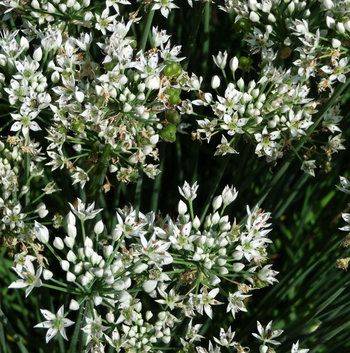 For around twenty years, plans have been in the works to transform a 24.5 mile section of abandoned railroad between eastern Urbana and Kickapoo State Park into a recreational trail. Once completed, this trail would provide a safe place for Champaign and Vermilion County citizens to walk, run, and ride their bikes, as well as promote the local economy through increased tourism and outdoor activity.
For around twenty years, plans have been in the works to transform a 24.5 mile section of abandoned railroad between eastern Urbana and Kickapoo State Park into a recreational trail. Once completed, this trail would provide a safe place for Champaign and Vermilion County citizens to walk, run, and ride their bikes, as well as promote the local economy through increased tourism and outdoor activity.
In the 1990s, the Champaign County Conservation and Design Foundation and the Champaign County Forest Preserve began negotiations to acquire the land needed to begin this project, but unfortunately met with some unexpected setbacks.
The company who owned the property, Conrail, had originally planned to donate the land to the cause, but was then dissolved. CSX Corp then came into ownership of the property, and negotiations had to begin anew.
Now, in 2013, negotiations have finally reached a conclusion and the section of railroad in Champaign County has been successfully purchased. At the time of this writing, the Vermilion County Conservation District has yet to purchase their portion of the trail, but it appears as though development will soon be underway.
President Steve Rugg of the Champaign County Design and Conservation Foundation generously agreed to an interview to discuss the trail project, the CCDC, and environmental awareness in Champaign County.
———
Smile Politely: Your organization has been getting some buzz lately about your plans to build a recreational trail between Urbana and Kickapoo State Park. How would you describe what the trail will be like?
Steve Rugg: It’s sort of a classic Rails to Trails Project. It will be a multi-purpose trail that will allow hiking and biking and running and jogging and those kinds of things. At the moment, it’s not being set up for any other animal traffic, which really means horseback riding. There are certainly some who are interested in that. That’s a decision way beyond the scope of what our organization has been involved with.
SP: How did your organization get involved in this project?
Rugg: It really had its roots in our organization in the late 1990s. This project has been a long time coming. We learned that much of the rail line in and around Champaign-Urbana was headed towards disuse—was being decommissioned and that sort of thing—and folks in our organization who were familiar with the Rails to Trails movement essentially said, “Hey, why not try for this piece of rail line. It would make a good Rails to Trails project.”
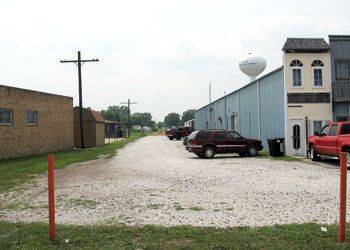 SP: What kinds of steps are involved when you take on a project like this?
SP: What kinds of steps are involved when you take on a project like this?
Rugg: There is federal law that permits the conversion of abandoned rail lines into a public service project like a trail. We go through an ownership discussion. When we originally began negotiations with Conrail, they were prepared to donate the property to us. CSX took a different approach, which might be described as, “Hey, this is our property, it has value. We’ll sell it to you.”
The experience across the country varies greatly from outright gifts of the property to an organization like ours, to a sale at a mutually agreed sale price to discussion in differences over the appraised value, and all kinds of things like that.
So, in some instances the property is sold for considerable sums. In other instances, the property is donated.
We engaged in a quite lengthy process with CSX and their real estate office to determine the value of the property. Over time, I think it became clear to CSX that if they took the position that they had to maximize the dollar value, that they could return on their investment, we probably would never get a deal.
CSX came to a point, where they said, in essence, “Alright, look. Here’s an appraised value. We’ll sell it to you for less than that, and take a charitable donation for the difference, and that’s about as far as we can go.” And we said, “Well, that’s about as much as we could hope for, and let’s see if we can put the money together.”
SP: Where do the funds for your projects come from?
Rugg: There are a variety of sources. Some are federal grants. Some are state grants. Some are private funds.
Early on in the process, CCDC Foundation undertook a fundraising drive, raised about a hundred thousand dollars. At the time, we thought that money would be available for development of the trail, not acquisition, because we thought we were going to get the property donated to us.
With a lot of help from local and federal legislators, we received grants to do preliminary environmental impact analysis, preliminary engineering, and some initial development money. Once we discovered that we were going to have to pay something to acquire the property, we began to submit grants for that, and we were able to put together a little over $1.1 million to acquire the property.
And I should stress again, that’s below the agreed upon appraised value of the property. So, CSX, yes, they’re going to get $1.1 million, but that’s not the full value of the property, and CSX did make a donation of at least some of the property to us. So I try to describe this as win-win for everybody.
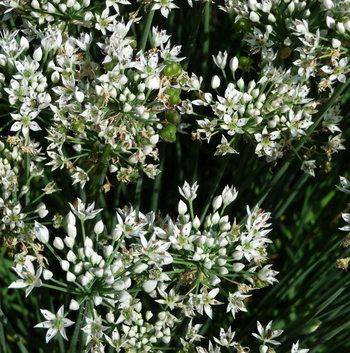
SP: What other projects are you currently working on?
Rugg: That’s a great question. A long part of the CCDC history has involved environmental issues in Champaign County. At the moment, we are involved with something called the Wandell Tree Trust, which makes trees available to municipalities at very low costs for landscaping public spaces.
We are involved in a variety of other environmental kinds of things—the Boneyard Cleanup. We have a small part of the artistic work that will be done in the City of Urbana section of the Boneyard Renovation Project.
I must say that trail acquisition and development has been a major focus for some time. We’re now at the point where we’re saying, “My gosh, we actually have the trail. What are we going to do next?”
SP: What do you consider to be the greatest accomplishments of the CCDCF so far?
Rugg: You know, if you ask some of the founding members of our organization, I think they would describe the process of environmental awareness that really was at the root of the founding of our organization.
What CCDC concentrated on in the early 1960s was rebuilding the tree landscape after the Dutch Elm disease. The impact of the Dutch Elm Disease–you may have read about that in history books, but if you’ve ever seen any of the pictures of the majestic elm trees in this town that were just wiped out… I mean, just take a look at the University of Illinois quad sometime from the 50s, with these magnificent elm trees double ringing the quad. And they’re all gone. They were wiped out in a relatively short period of time—just a matter of a few years. Dutch Elm disease swept across the Midwest, and it just took them all.
So, in an era when environmental awareness was just beginning to catch hold, CCDC concentrated on the landscape of Champaign County. One of our major accomplishments was helping with the reforestation of University Avenue between Wright and Goodwin. If you look there, there’s another beautiful double row of trees, that CCDC had a great hand in establishing.
The organization has focused on a number of other environmental issues. The proposal that would have flooded a good portion of Allerton Park, by damming the Middle Fork, the Vermillion River, and a variety of other major environmental issues around here.
Today, when you look around town, there are a number of environmentally active organizations—the Prairie Rivers Network, for example. There’s a land conservation trust working hard to preserve a shoreline along rivers and streams.
But in the mid 1960s, when our organization started, none of those were around. And really, the environmental awareness issue, I think, looking back at our history.
Now, the fact that we finally got the Trail Project acquired and ready for development is a big current issue. But over time, I think the environment has really been the major focus of the organization.
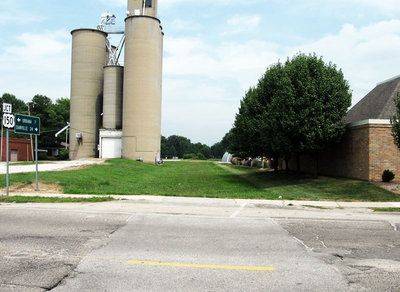 SP: How many members are in CCDC?
SP: How many members are in CCDC?
Rugg: We have a board of about 20 and a membership that ranges from 150 to 200. Lots of folks who have been with the organization for a while will come to our annual meetings, but aren’t necessarily actively involved beyond that.
SP: What does it take to become a member?
Rugg: Just an interest in what we do, and an application.
SP: Do you think C-U is an environmentally friendly area/are people interested in outdoor activities here? How so/in what ways?
Rugg: I think the level of environmental awareness in this community is pretty high. Obviously with the University of Illinois here, there are all kinds of folks paying very careful attention to all kinds of things, whether it’s the impact of the agricultural community, the impact of environmental warming, global warming, and everything in between. So yes, I think the general interest in high.
One of the things that CCDC has focused on is, “Hey look, it’s great to have this global view, but let’s act locally. Right? Think globally, act locally.” I think CCDC has had some level of effectiveness in that area.
SP: What can readers do to help make Champaign County a better place to live?
Rugg: It ranges from everything to paying attention to what you pour down the storm sewer drain to finding ways to landscape your place of business, your residence, in ways that respect the natural environment of this area.
Plant more native plants and not the ones that need to be intensely fertilized throughout their entire lives… Just be more aware of the impact that we all have, every day, on our environment. I’ve got a lot more prairie plants in my garden than I used to have—I’ll tell you that!
———
Before concluding our interview, Steve wanted to make sure it was clear that CCDC was only responsible for acquiring the Champaign County portion of the trail. Champaign County Forest Preserve District now owns the land, and they in cooperation with Vermilion County Conservation District will be in charge of actually maintaining the trail once it has been developed.
Lisa Sprinkle from Champaign County Forest Preserve District also provided a brief interview in which we talked about the role of the CCFPD in the Rail to Trail project.
———
SP: In what ways are you working together with Champaign County Design and Conservation Foundation and the Vermillion County Conservation District on the Rail to Trail project?
Sprinkle: The Forest Preserve has been a part of this from the beginning with Champaign Design and Conservation Foundation.
Right now, we’re just working together to make sure we’re all on the same page. Obviously right now, Vermillion County hasn’t secured their part of it yet, but we are working toward making sure that everything will be unified once that happens.
We’re coming up with rules and regulations, just a lot of the things that we’re developing for the trail, and we will share that with Vermillion County Conservation so they will have that in place also when they do secure their portion of the trail.
SP: What are the next steps for your organization as far as actually developing the land into a trail?
Sprinke: We will be heading into a fundraising phase. Obviously, it will take quite a bit of money to get the trail built. So, we will be working towards setting up committees for people throughout the community so they can get involved if they want to get involved, and then moving forward with a fundraising plan.
SP: What obstacles do you anticipate you will need to overcome to bring this project to completion?
Sprinkle: A lot of it will just be gaining the money—I mean, it’s a huge undertaking—so there will be quite a bit of that involved, and also time for getting it completed.
SP: What kind of impact do you expect the trail to have on the local community?
Sprinkle: I think it will have a tremendous positive impact on the community. There’s already a great deal of people, you know, long distance bike riders there on 150, whereas the trail will give them a safer passage for their distances. We have quite a few people who come out to Homer Lake already on their bicycles and this will just give them an easier route to get there. We’ll have a lot more runners and walkers. It’ll just provide a safe area for more people to be involved outside.
SP: What can Champaign County citizens do to help make this project a reality?
Sprinkle: They can make donations, or they can contact us at the Forest Preserve if they would like to be a part of a committee. If they want to help with fundraising or promotions—there are so many different committees—they can go on our website and find different areas that, if they’re wanting to be involved with helping make sure the trail comes to fruition, they can do that.
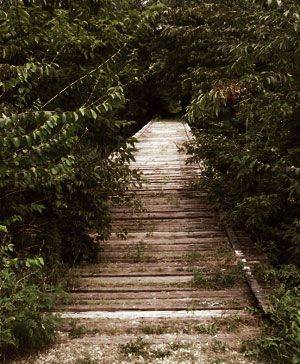 SP: How does this project compare to other projects your organization has done in terms of difficulty and community involvement?
SP: How does this project compare to other projects your organization has done in terms of difficulty and community involvement?
Sprinkle: It’s basically like opening another Forest Preserve—just a long, linear Forest Preserve—but there’s still the whole time management thing, getting everyone together, and figuring out how to add the trail into our daily work, because that’s just a part of it. There aren’t going to be separate people hired fully for the trail, so it will just be working on incorporating it into our daily tasks already.
We have five preserves, so there are definitely people here who know what to do and how to do it. It’s just a matter of getting out and working with the community, letting them know what the goals are and getting all of that publicized.
So, I mean, we have the expertise to do it, we just have to get it done.








